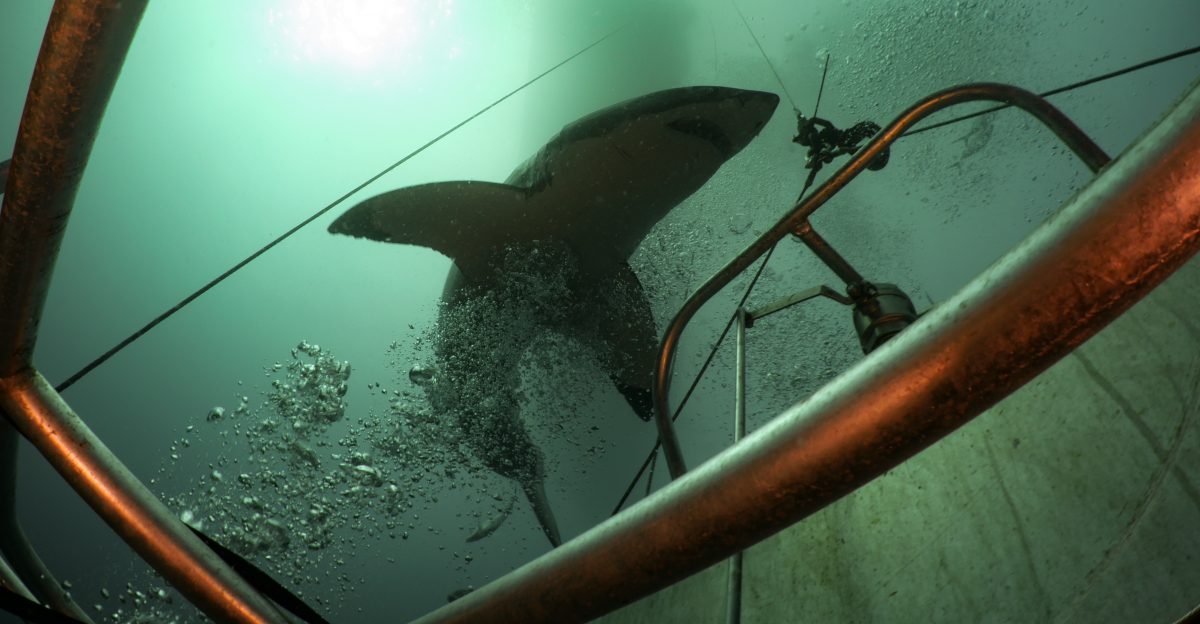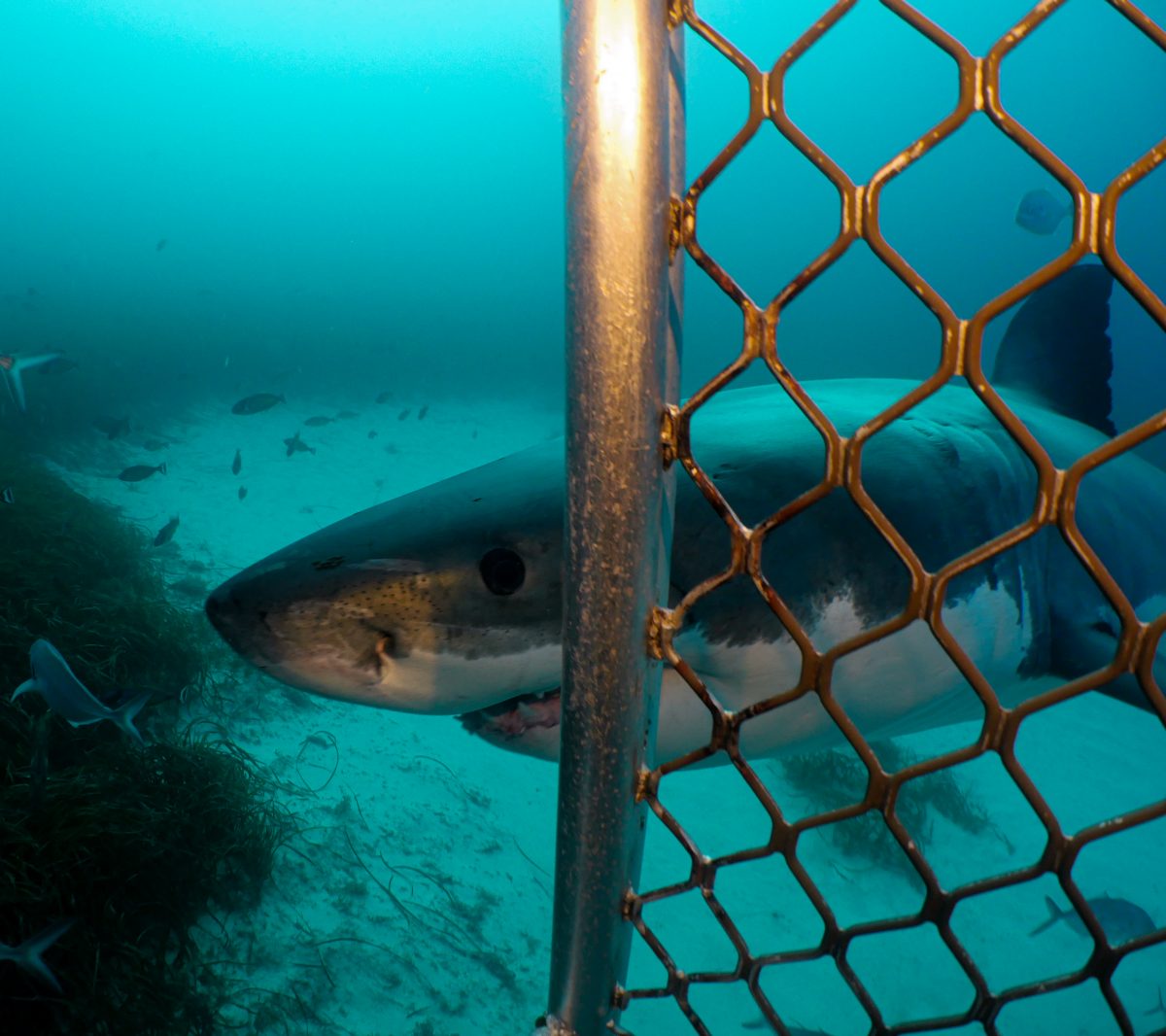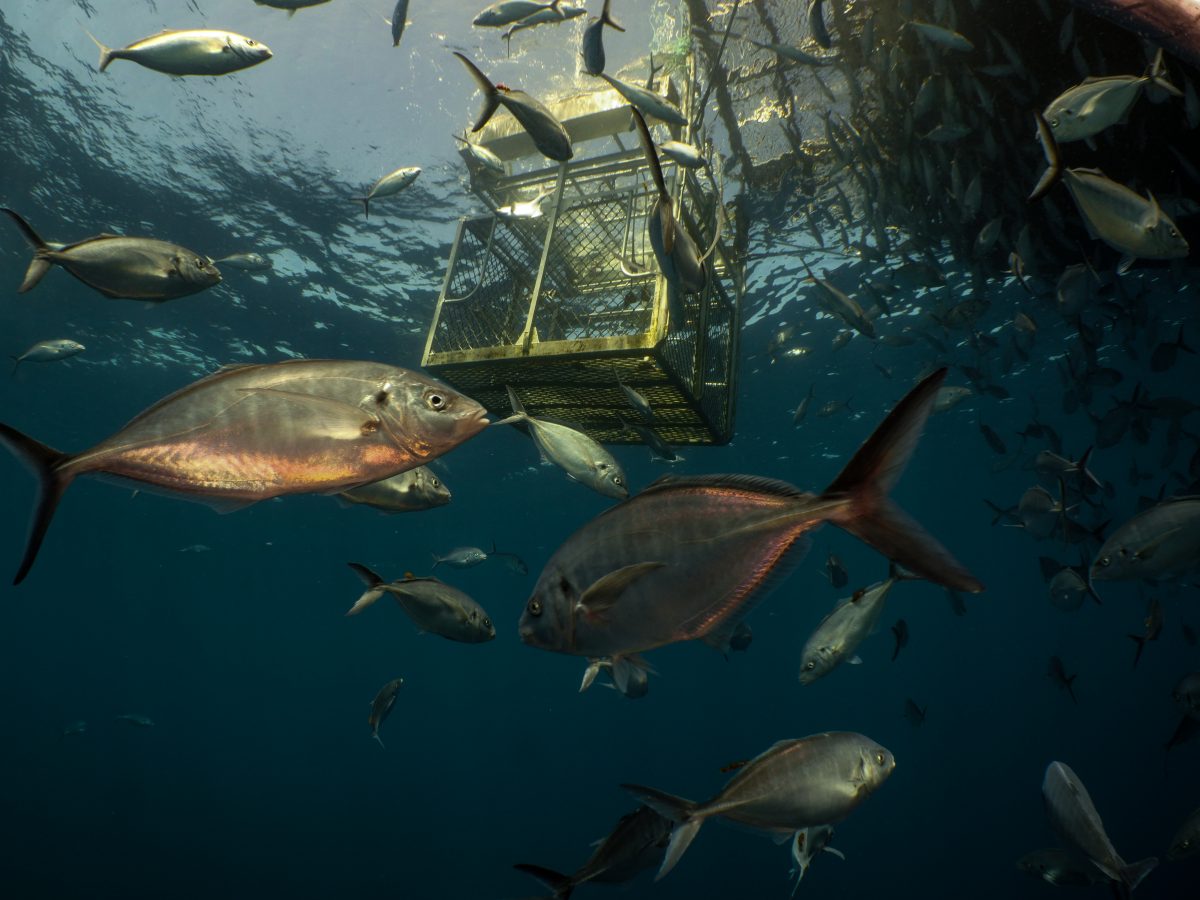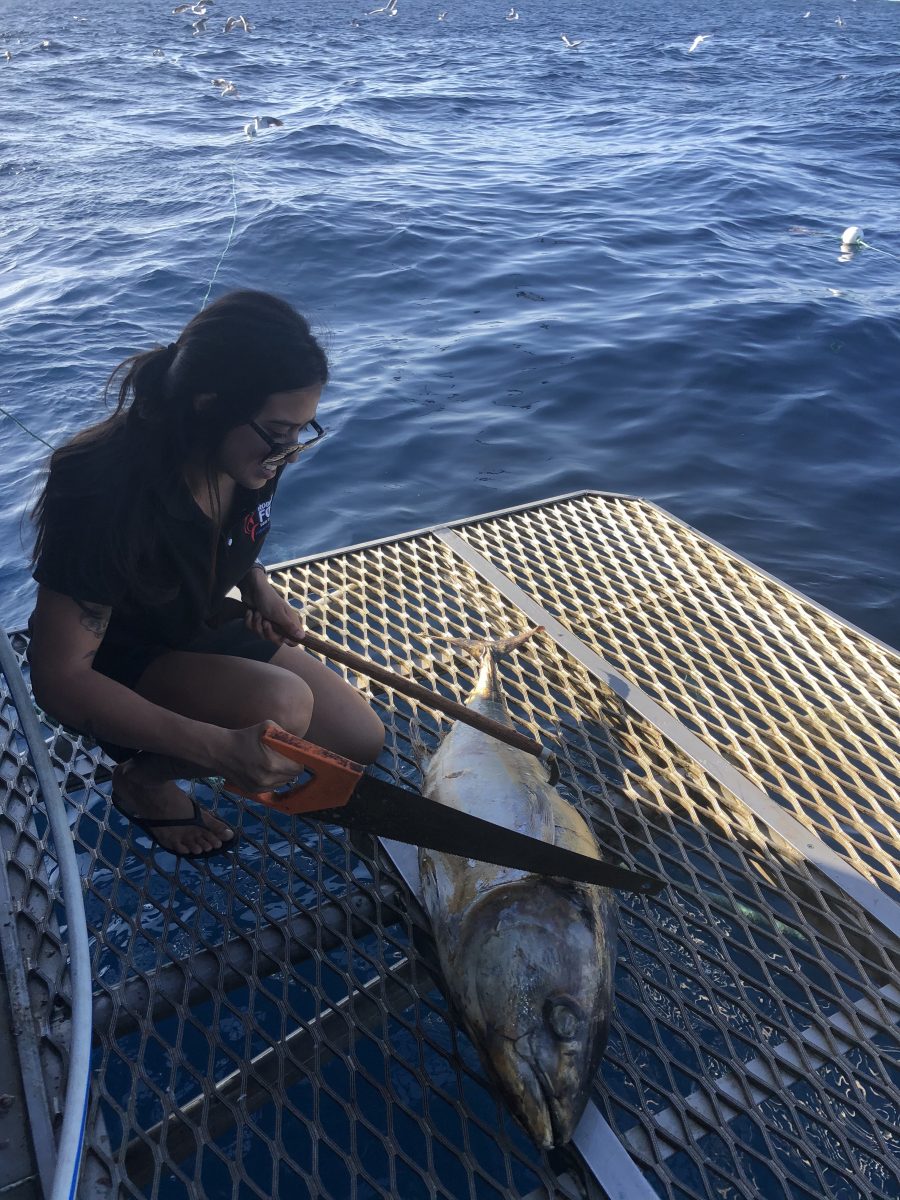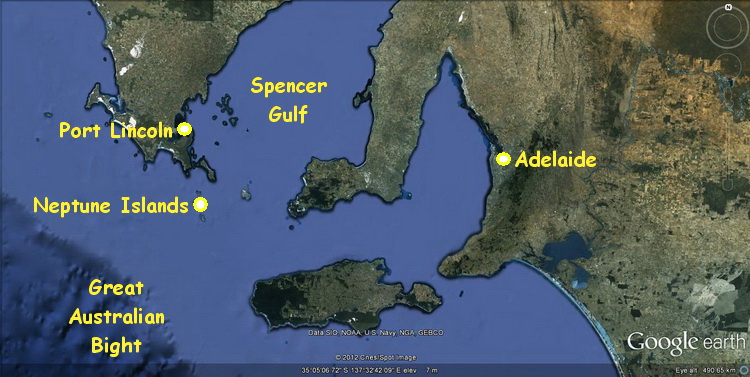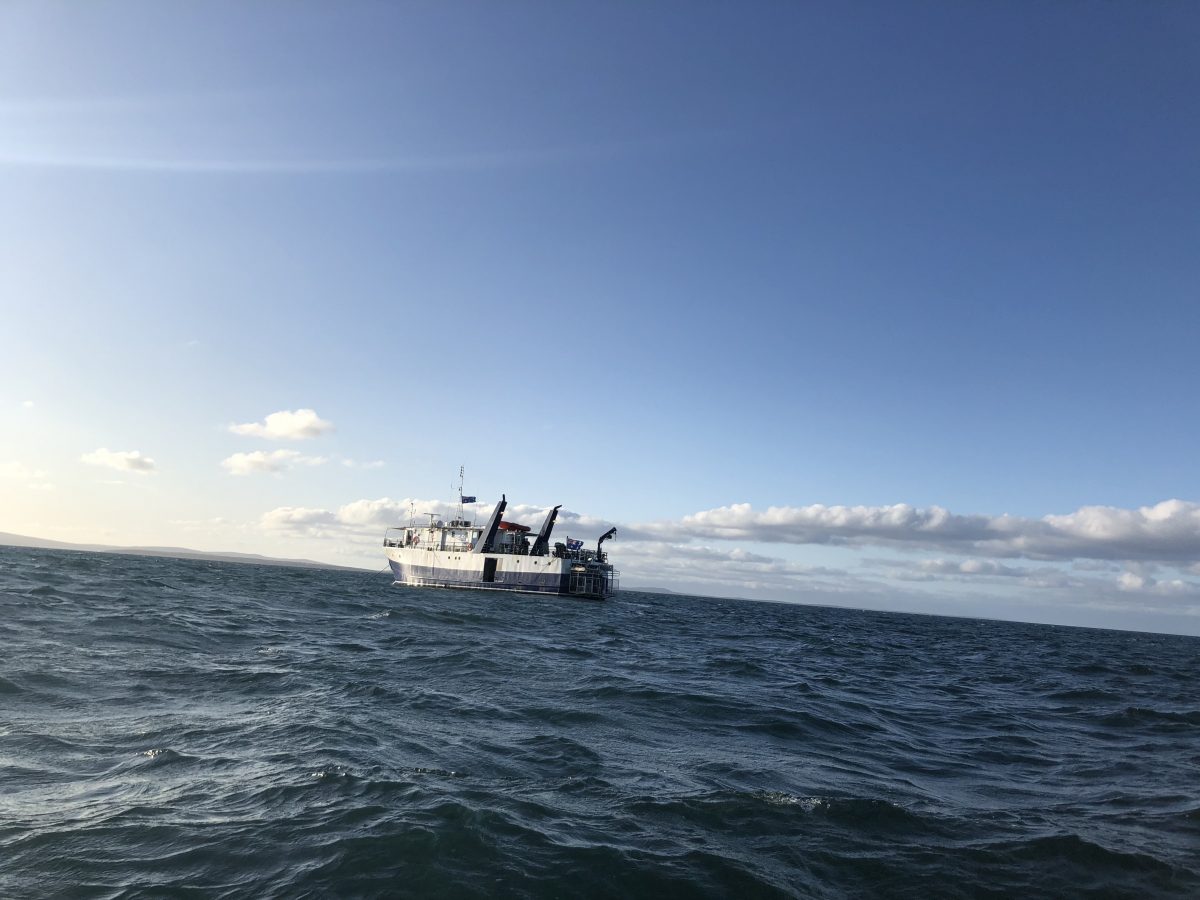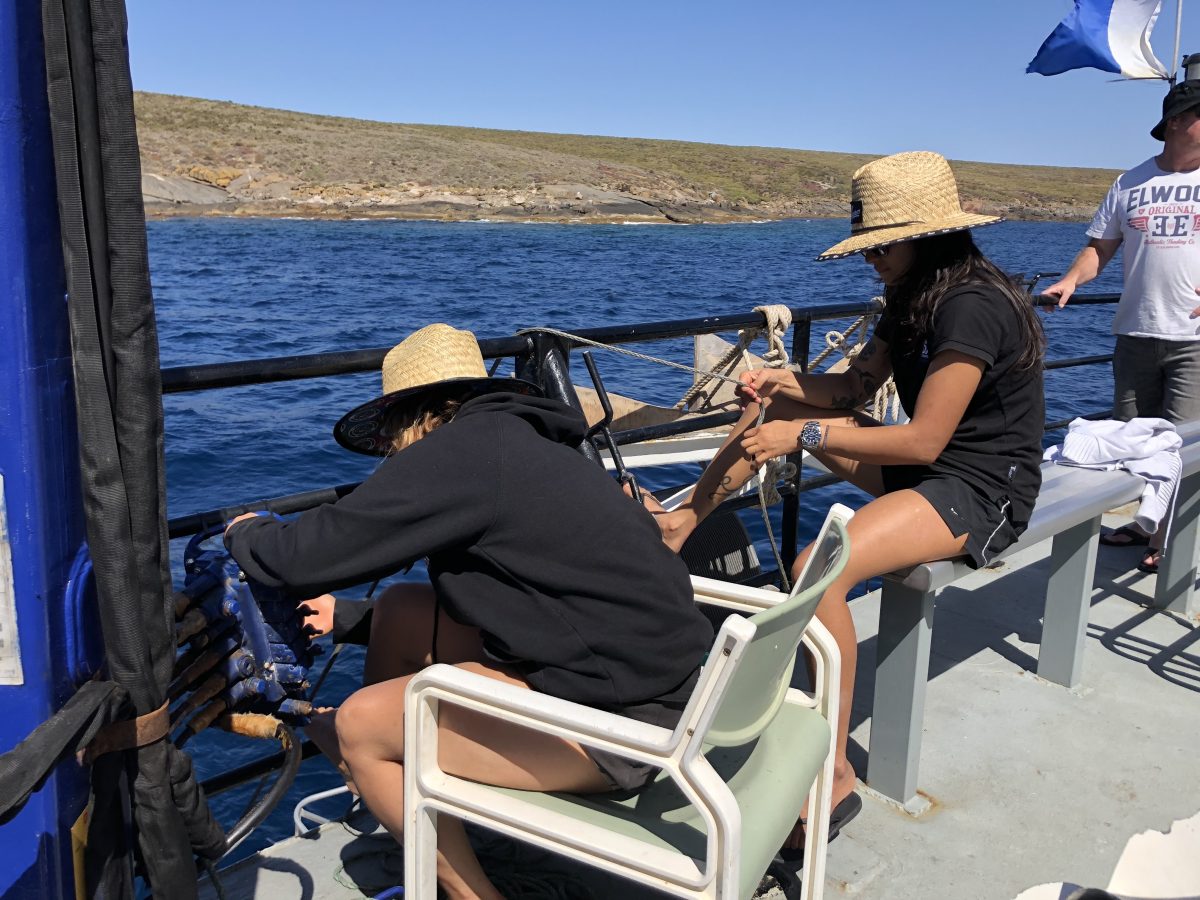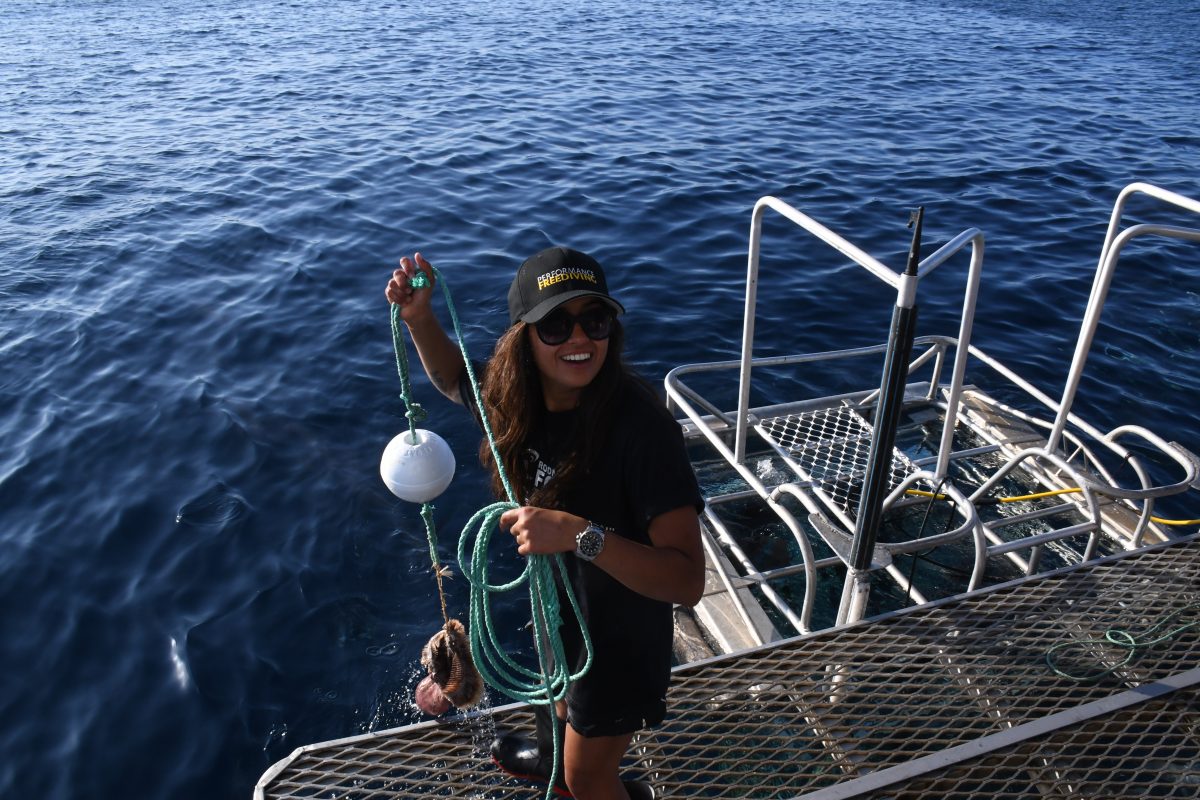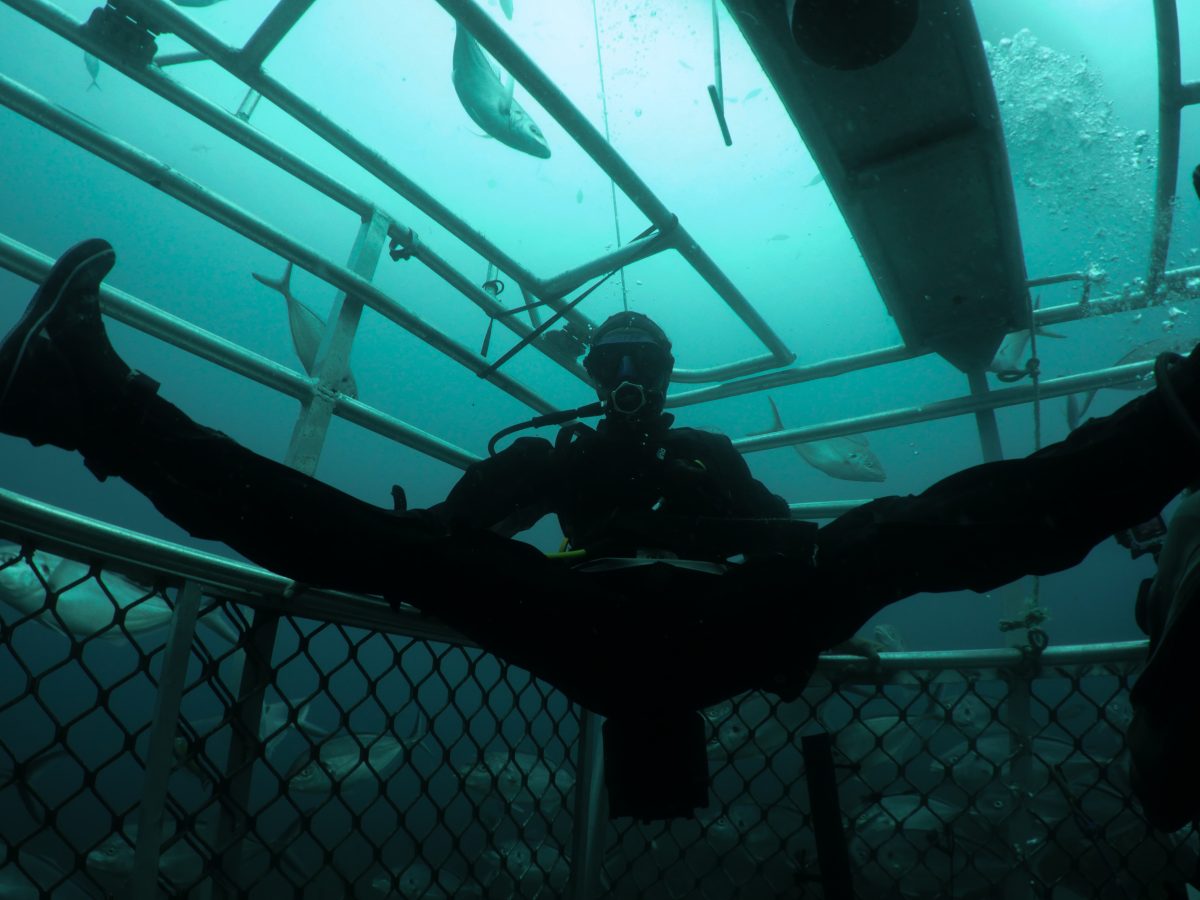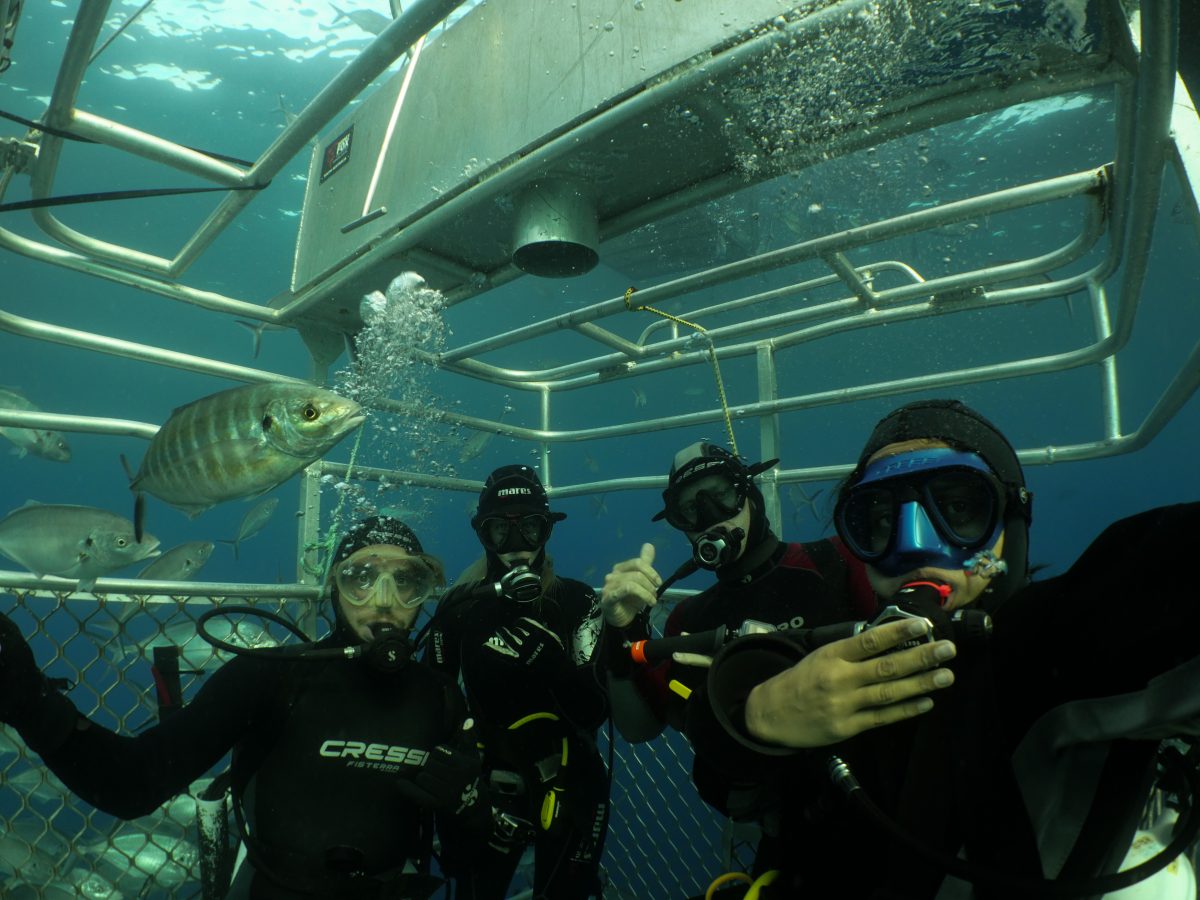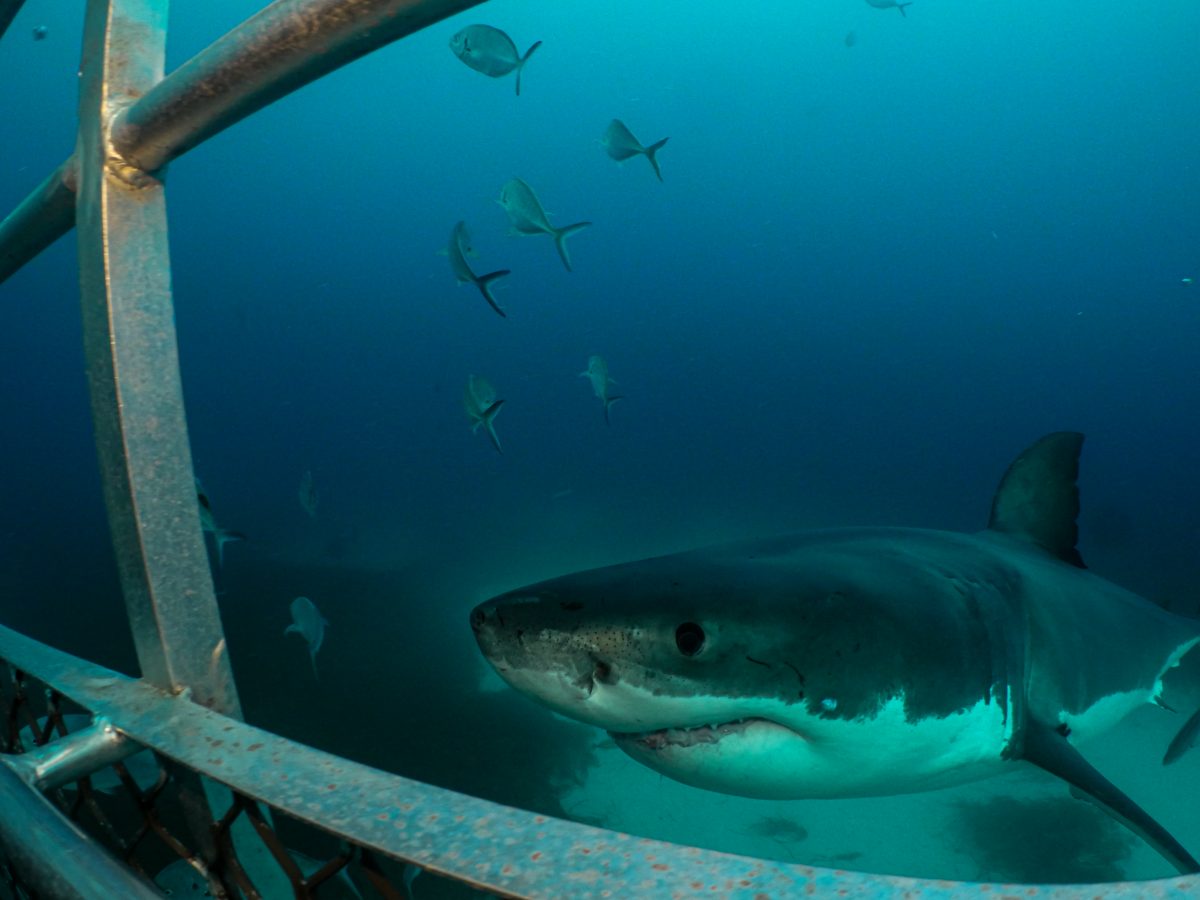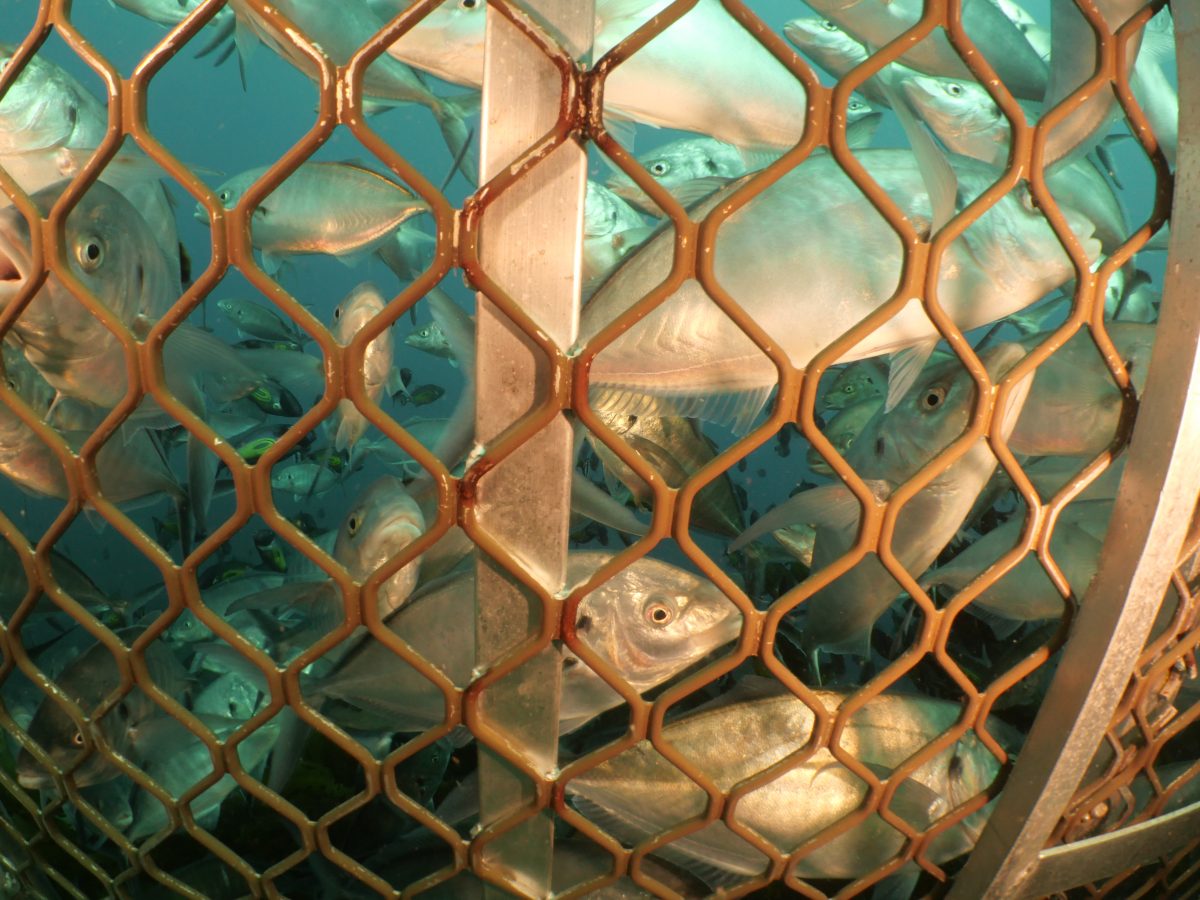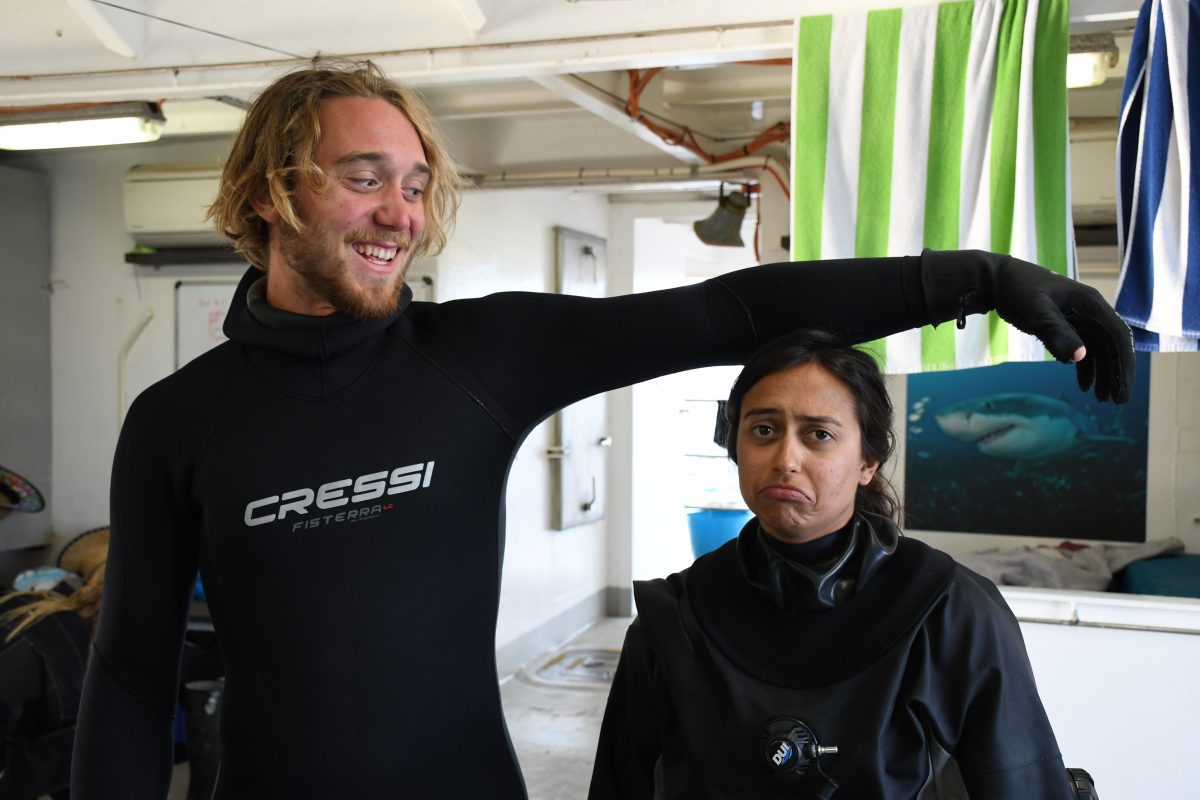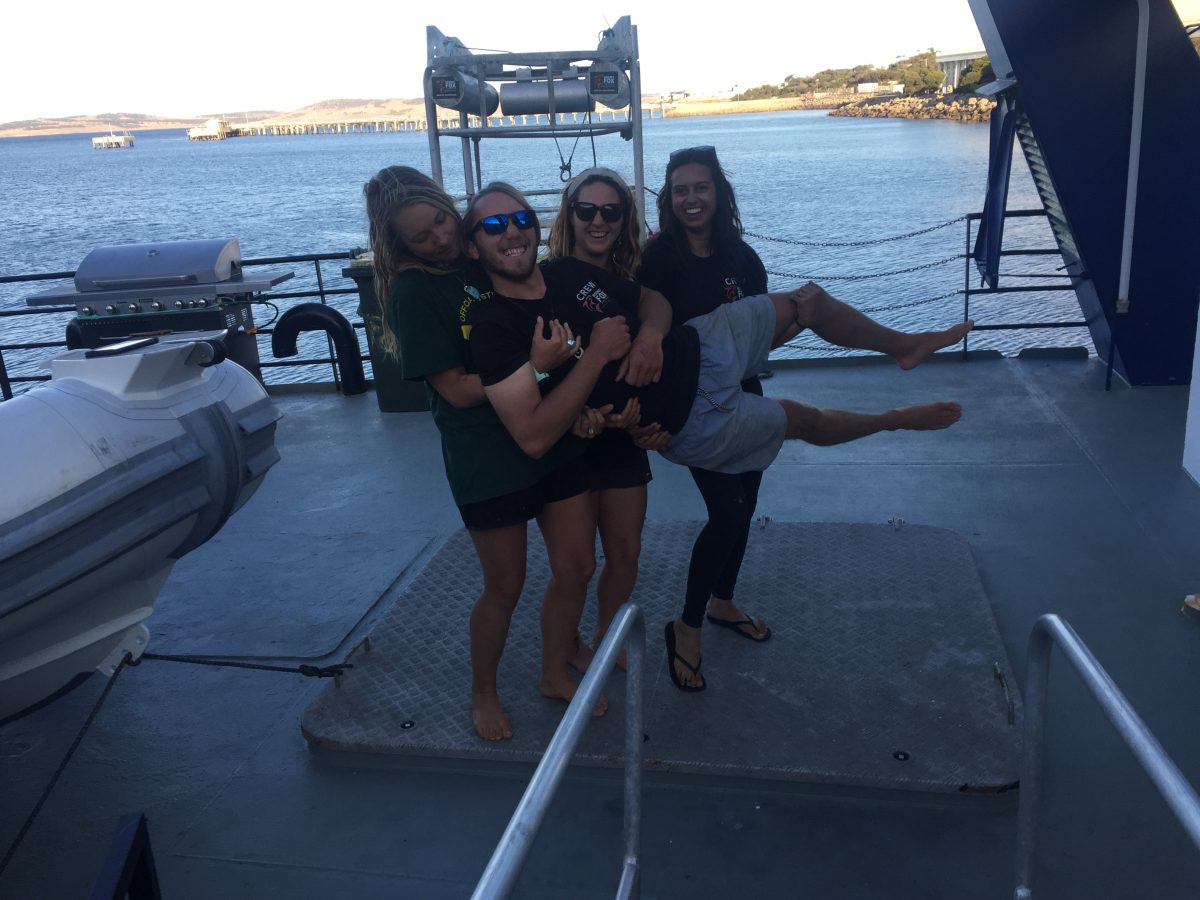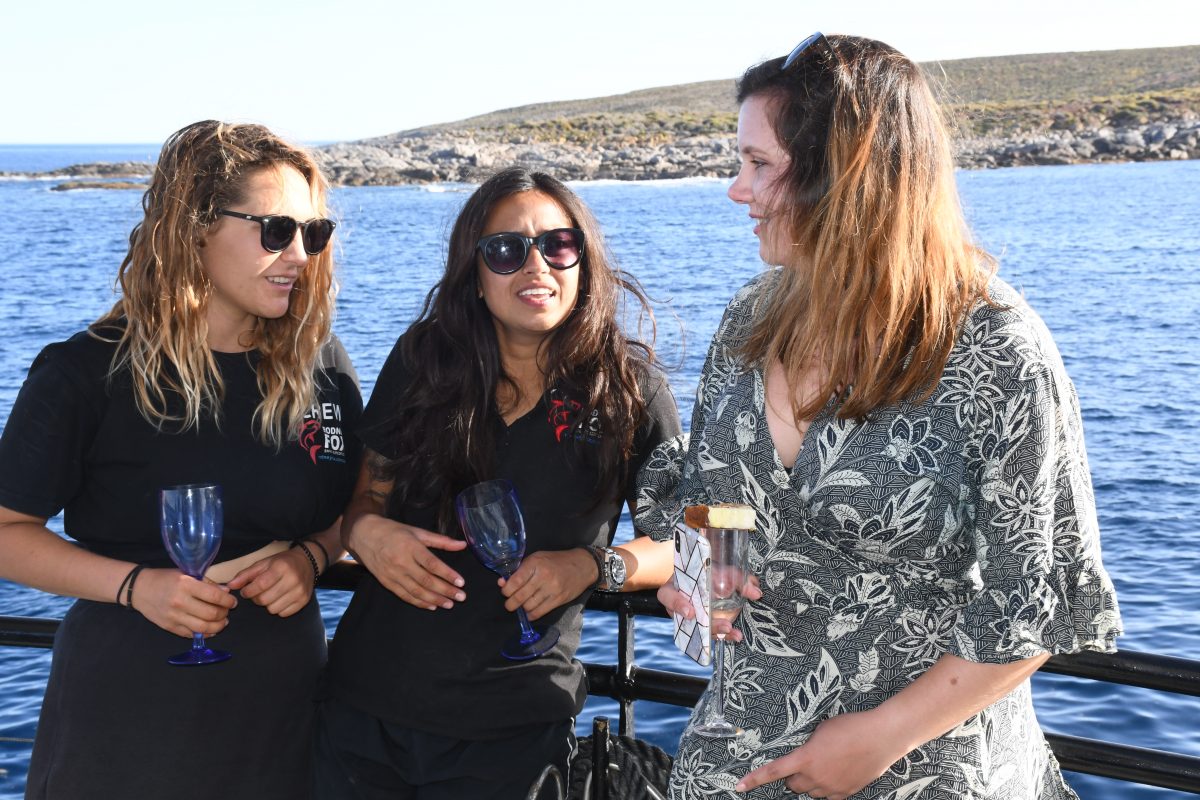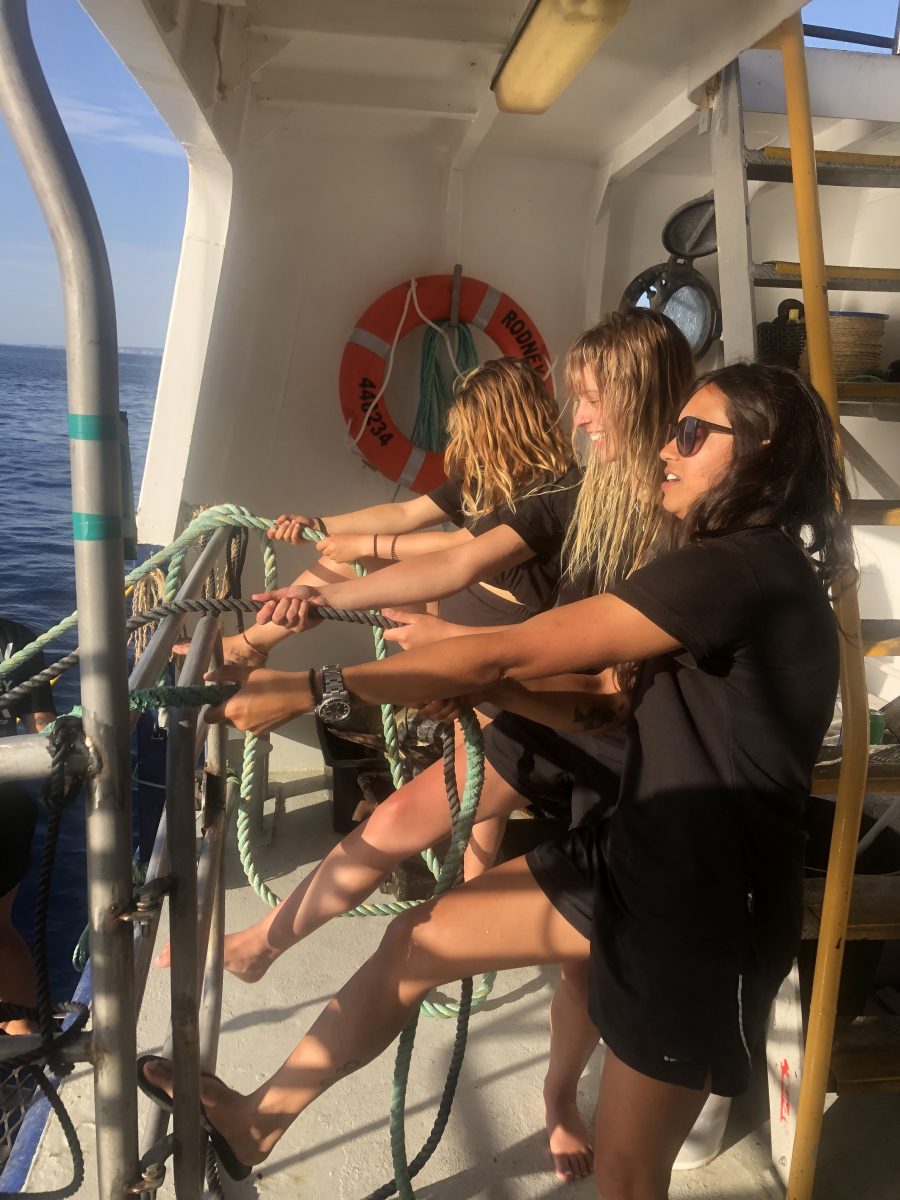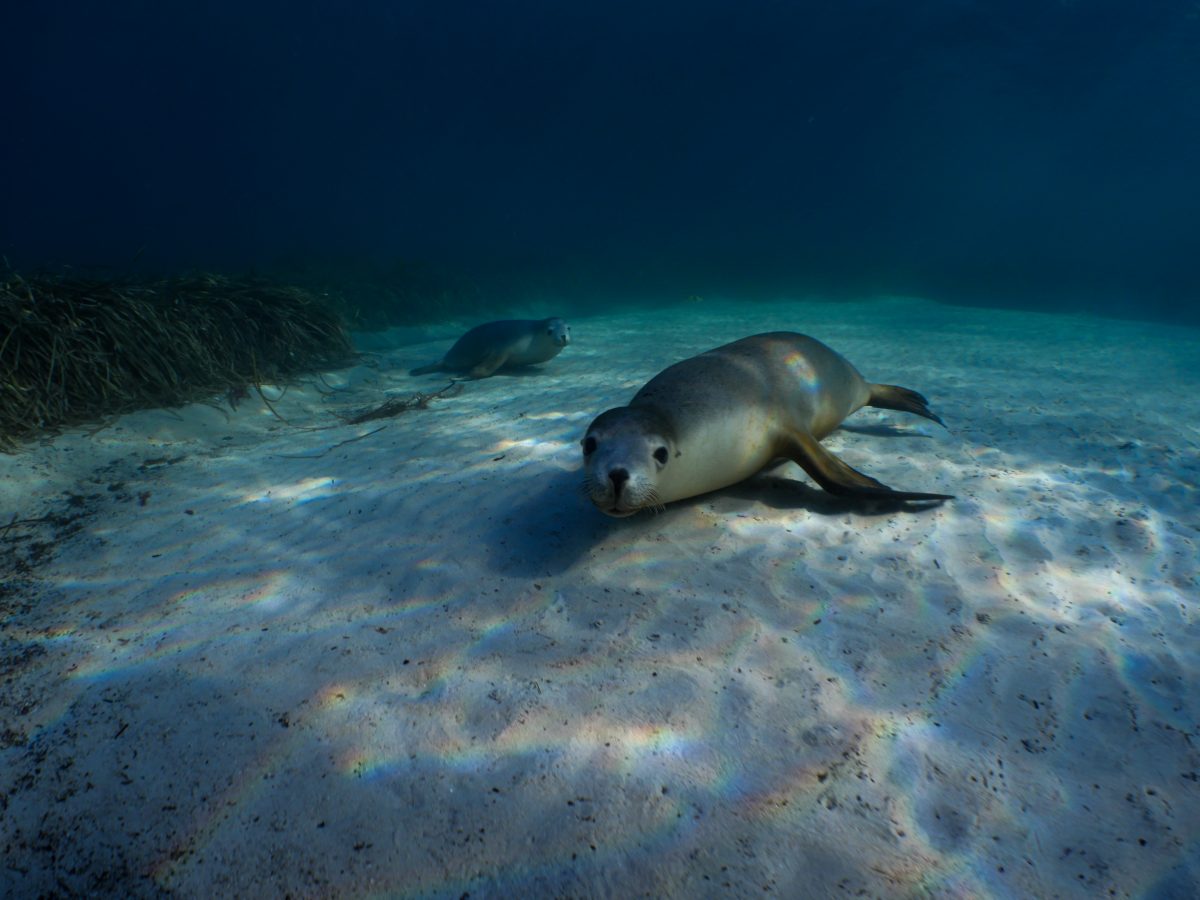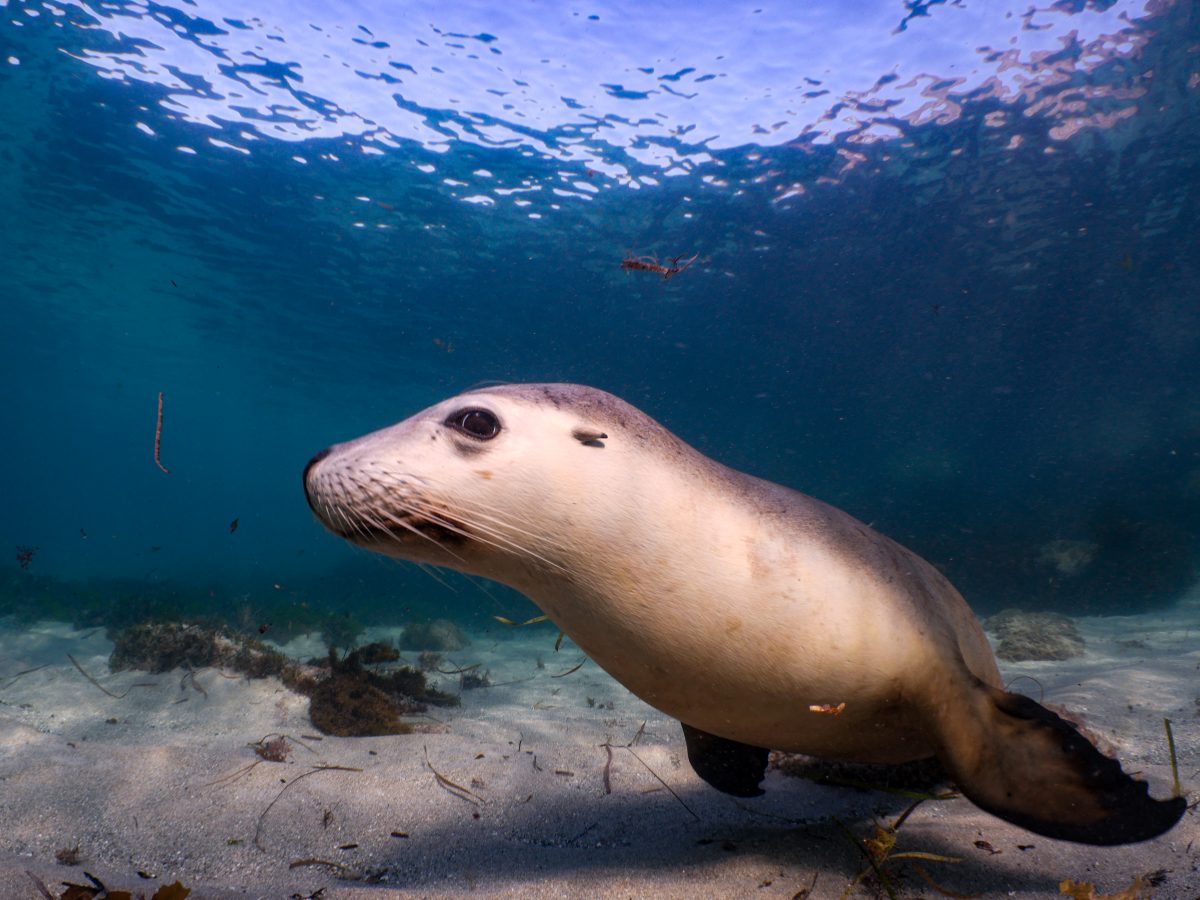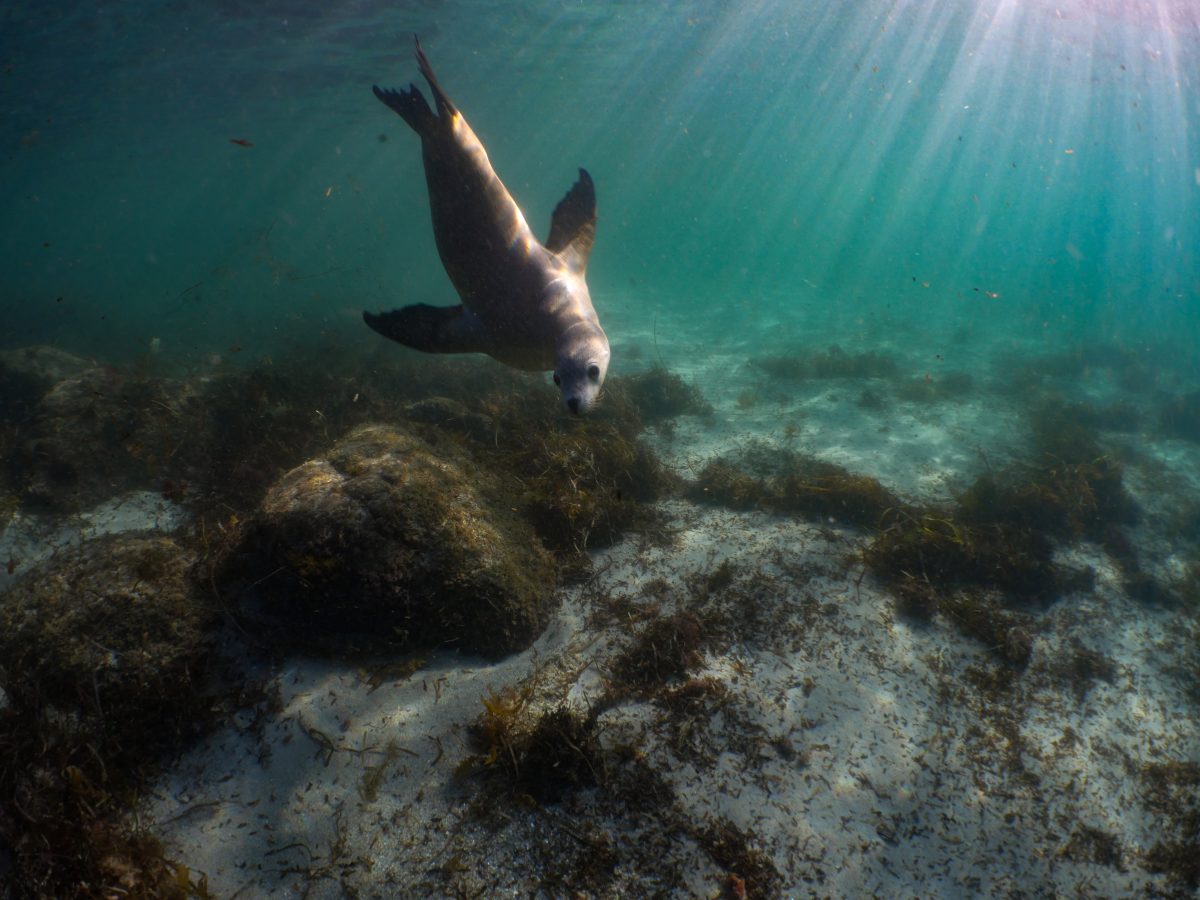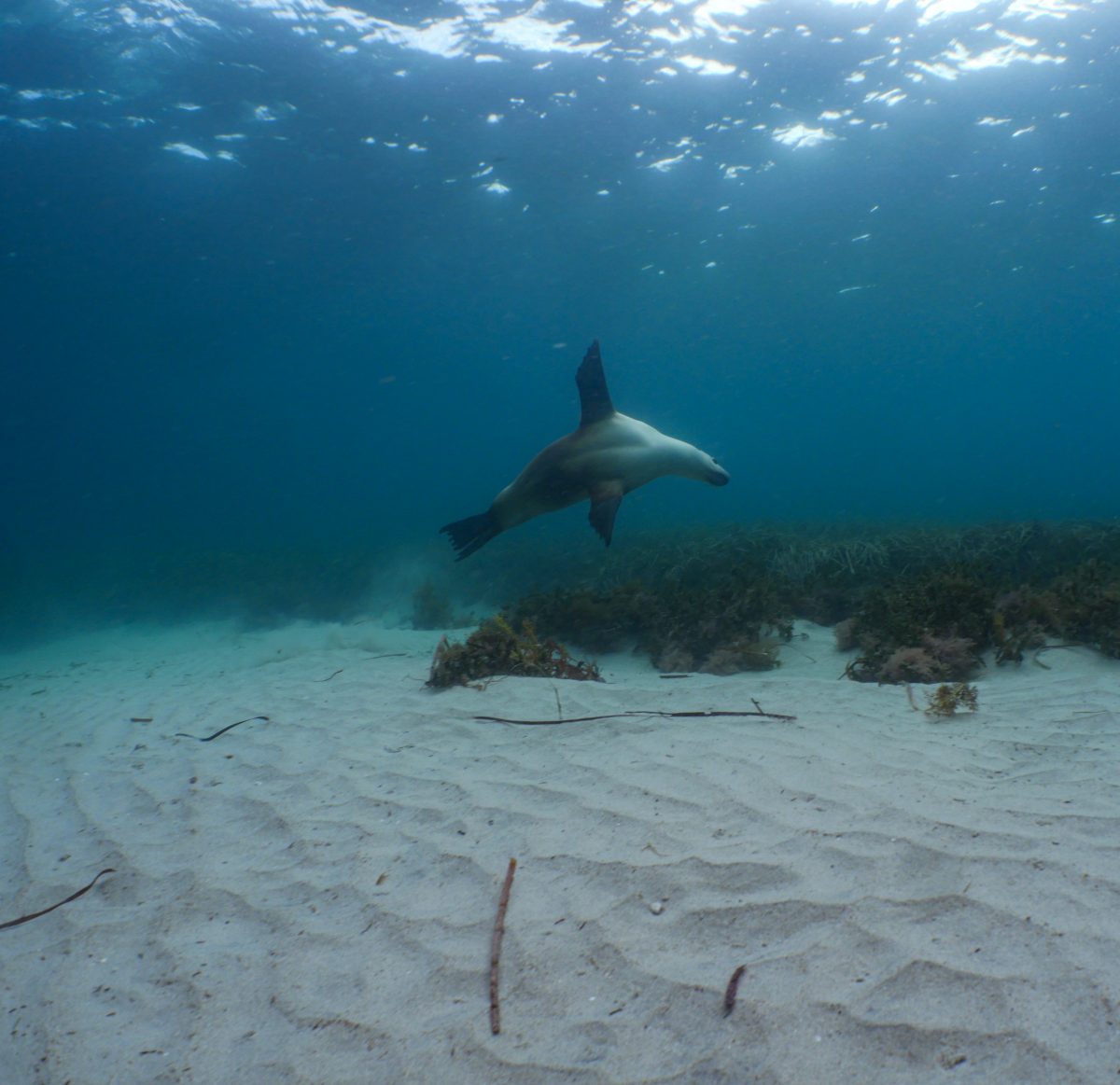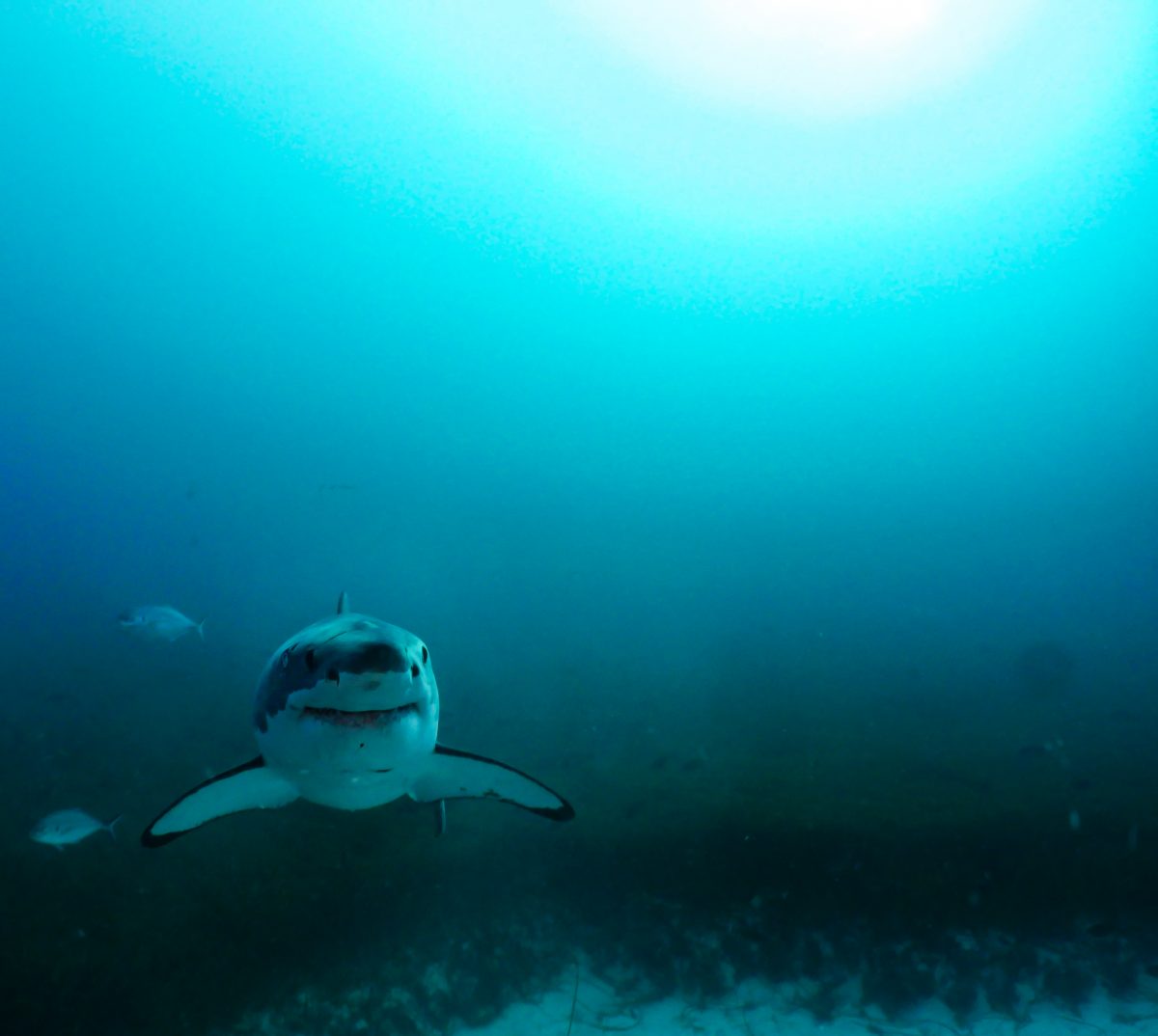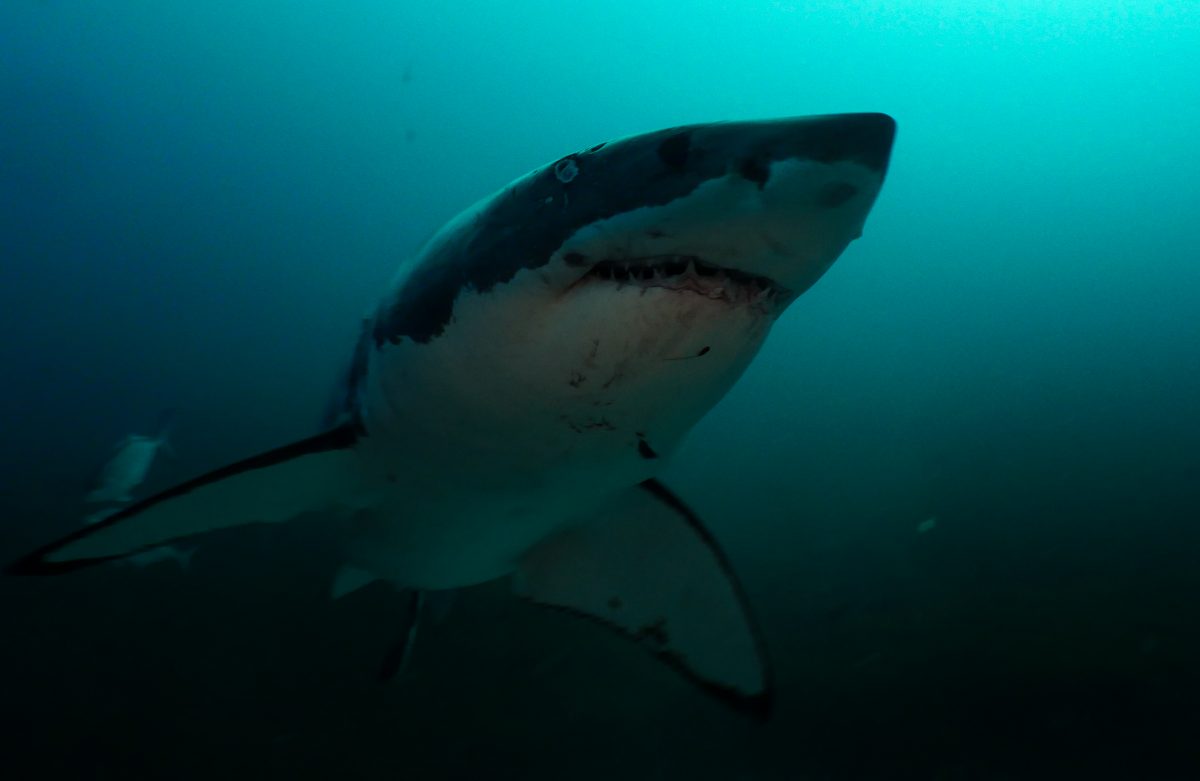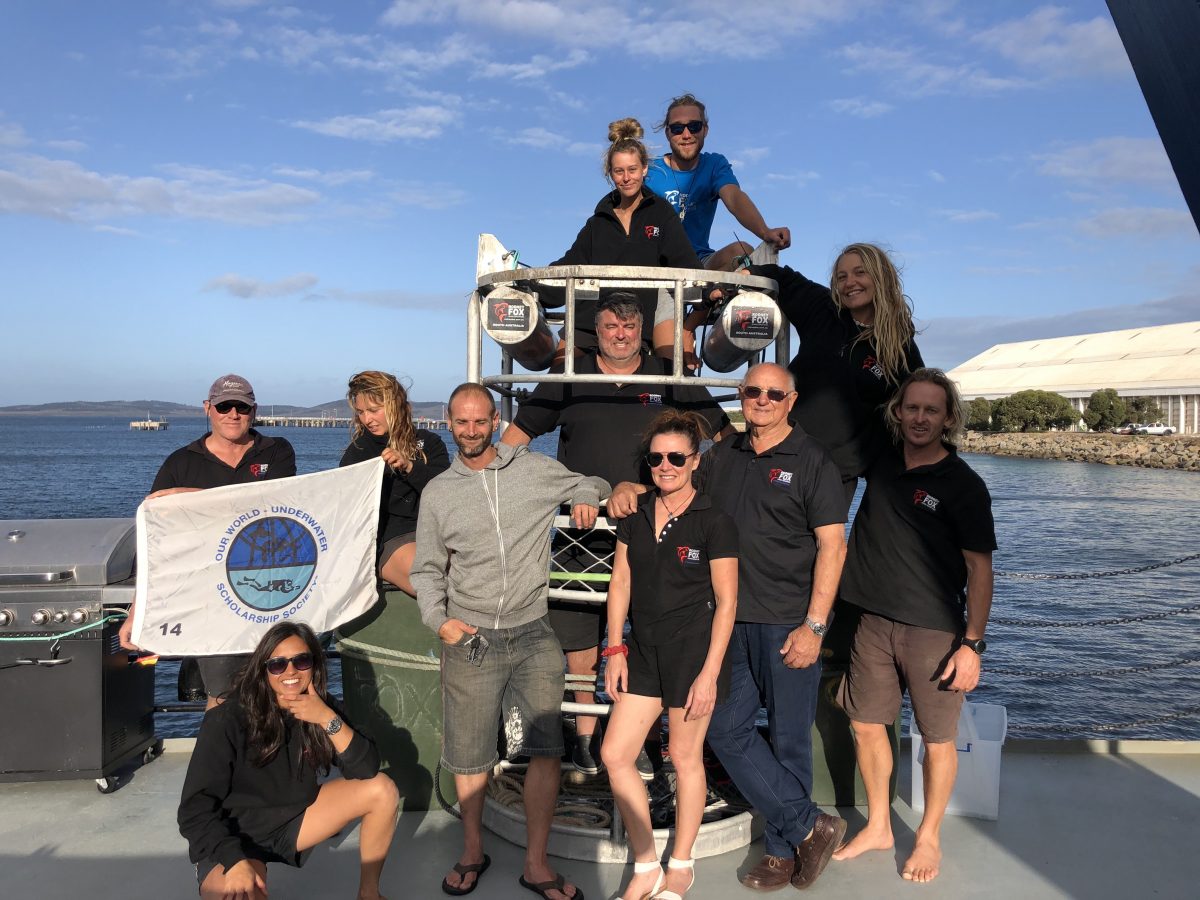Cage diving with great white sharks is the ultimate dream trip for many people. Diving in a cage was actually conceptualized, and actualized here in South Australia by the one and only Rodney Fox. Though today, Rodney is a sweet 79 year old man, he has lived a crazy life full of adventure. In 1963 when he was out spearfishing he was bitten by a white shark all across the torso, but after 463 stitches he survived and went on to become an pioneering shark conservationist.
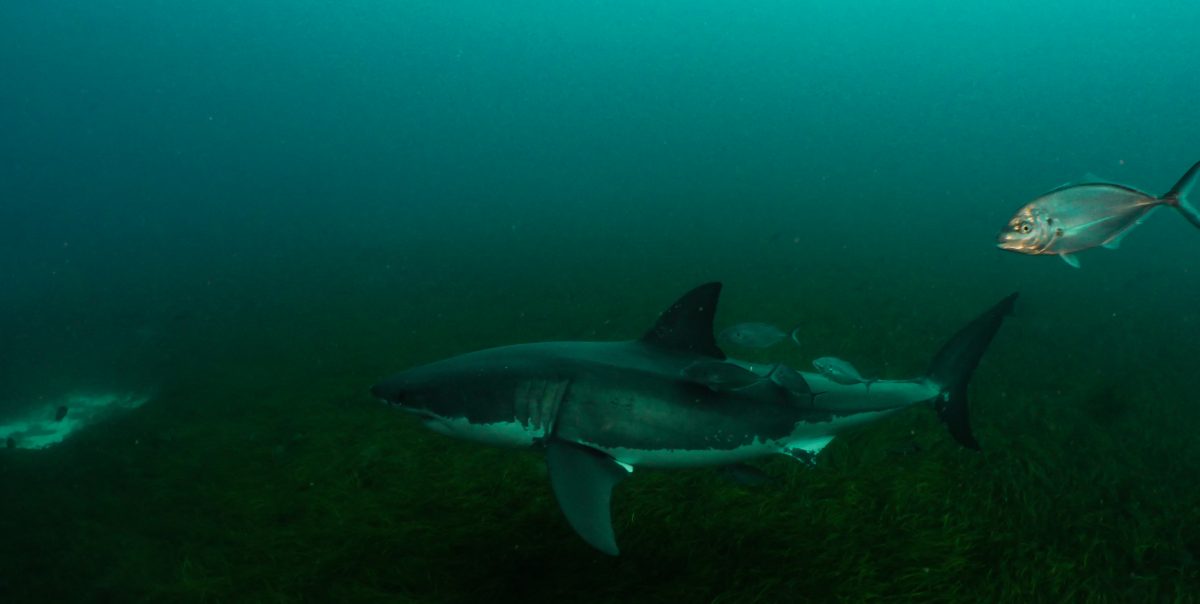
White Shark (Carcharadon carcharias) swims along above a lush seagrass meadow
Though nowadays many of us are advocates for shark conservation, back in the 1970s, Sharks were still very much public enemy number 1. After his attack Rodney went on to join multiple expeditions including those to catch sharks and also to test out the explosive powerhead; an underwater gun designed to kill sharks. However, following one of these trips he realized that sharks didn’t seem to act like the driven killing machines they were made out to be. So one day at the zoo, watching lions in a cage, he thought it might work if he put himself in a cage instead, to watch the sharks behave without putting himself at risk. In this way cage diving was born, and the slow transition from monster to conservation icon began.
The Rodney Fox expeditions have been taking people out cage diving with the white sharks since 1965, and they have been involved with OWUSS for over 10 years, bringing scholars on board to help out the crew, and of course do a bit of diving with GREAT WHITE SHARKS! Rodney’s son Andrew, who invited me to join them for 4 trips, now runs the boat and expeditions. Serendipitously, I am on board for the two trips celebrating the 50 year anniversary of the film; Blue Water, White Death. This movie was one of the first of its kind, featuring the first underwater footage of Great White Sharks, and inspired Peter Benchley to write his film Jaws, which was also filmed here. Rodney himself joined for these trips, so had the pleasure of his company, and heard some of his wild diving adventures first hand.
I arrived in Australia, where I spent a day in Sydney with the OWUSS Australasian coordinator Jayne Jenkins. She dropped me to the airport the next day where I flew to the small town Port Lincoln on the southern edge of the country. This town serves as the base for the Rodney Fox trips, so I rocked up to the ship and met the crew and got unpacked in my bunk in the crew cabin. The next day we had to prep for the upcoming trip. This entailed doing all the grocery shopping in the ute (Australian term for truck), cleaning the ship, and getting all of the bait needed for the trip. At ~100 Kilos of bait used each day this is not an easy task. Once we loaded up, and all of the guests arrived we departed for the Neptune Islands, about 30 nautical miles south of Port Lincoln. These islands are great sites to see white sharks because they are directly along their migration route from West Australia to New South Wales. The islands are also home to seal colonies, which make them great grounds for white shark feeding as well.
The ship – MV Rodney Fox – is 32m vessel, with capability to sleep 25 people. It also has a tender boat for diving excursions, a dive deck, and of course the cages – one for the surface, and one that can travel down to the bottom.
The Rodney Fox expeditions are the only cage diving operation worldwide with a bottom cage that is lowered all the way to the ocean floor. Using a winch on the boat it can be moved up and down in the water column, and through a series of rope pull combinations, the divemaster in the cage can communicate with the crane driver with the signal rope.
Once we arrived at the Islands, we immediately started chumming the waters. Using tuna deemed unsuitable for humans, from the tuna farms in the area, we set up a constant stream of minced fish into the water, As well as throwing out a couple lines with big chunks of fish on them. The scent of fish, as well as a lot of patience (sometimes a couple days) is a great way to bring in the star of the show. Because we don’t want the sharks to associate the cage diving with free food, the baiter needs to be vigilant so that the bait is pulled in fast enough that the shark doesn’t eat it. As white sharks are brilliant ambush predators, this can be very difficult, and requires practise.
After a couple hours of chumming we got into the water. Diving in a cage is a very novel experience; you have no fins, or BCD, and spend the entire dive standing up, and bouncing up and down with the swell and current. After a full day of diving with no show sharks, we finally got a sighting in the 3rd dive of the day. The excitement when a shark is spotted is infectious, and the whole boat gets riled up!
That day and the next we had two male sharks circling us… it was a great way to start my time on the boat. When there is a 4m long shark hanging around, it is really hard to focus on anything else. The whole dive I was just buzzing, and I had to keep reminding myself I was 20m underwater, and had to keep breathing.
By the end of the second trip, I was trained up as a cage captain, meaning I could take guests down and lead the dive. It’s a different mentality leading the dive, as you need to focus on the guests, attracting the sharks, and making sure the cage doesn’t hit the bottom. Another consideration I hadn’t thought of is the hundreds of schooling fish also attracted by the bait. Whenever the cage dropped, we were swarmed by schools of silver trevally, and yellow and blue triggerfish. These guys were pretty annoying, and I got bitten a couple times when I was in between them and the bait.
It was really fun to get in the groove with all the jobs that needed to be done daily. I really started feeling like part of the crew.
Over the duration of all the trips, we had quite a few amazing white shark interactions, as well as some sightings of the speedy bronze whaler sharks, some gorgeous smooth stingrays, and of course the stops at Hopkins Island to swim with the endangered endemic Australian Sea lions. These pinnipeds were a highlight of each trip for me. The species is well protected, and they love to play with their bipedal visitors. It is a joyous experience to zoom, and twirl around with such engaging creatures.
Though the Rodney Fox expeditions run trips for visitors year round, they also have an extensive research program that has been running for almost 20 years. Since 2001, they have identified, and catalogued over 1000 sharks. In conjunction with Universities and Non-Profit scientists they have also tagged, and sampled the sharks for a variety of different projects, all with the ultimate goal of increased understanding and protection. Currently, white sharks are listed as Vulnerable by CITES and are internationally protected. As they are slow growing, and slow reproducing species, it is vital to protect them to ensure the survival of the species.
I loved the diving in the southern ocean. The white sand, seagrass meadows, and diverse red and brown algae really reminded me of my home in British Columbia, Canada. I was reminded of the absolute brilliance of temperate oceans, and the beautiful misunderstood creatures they are home to. This past summer, has been record low for the number of sharks seen, and we don’t know why. This speaks to the importance of understanding their mysterious lives, and role within the ecosystem. We should all really care about this! The great white shark is a truly formidable marine creature that has inspired public fascination in the ocean. Protecting it is synonymous with protecting the awe-inspiring ocean it embodies.
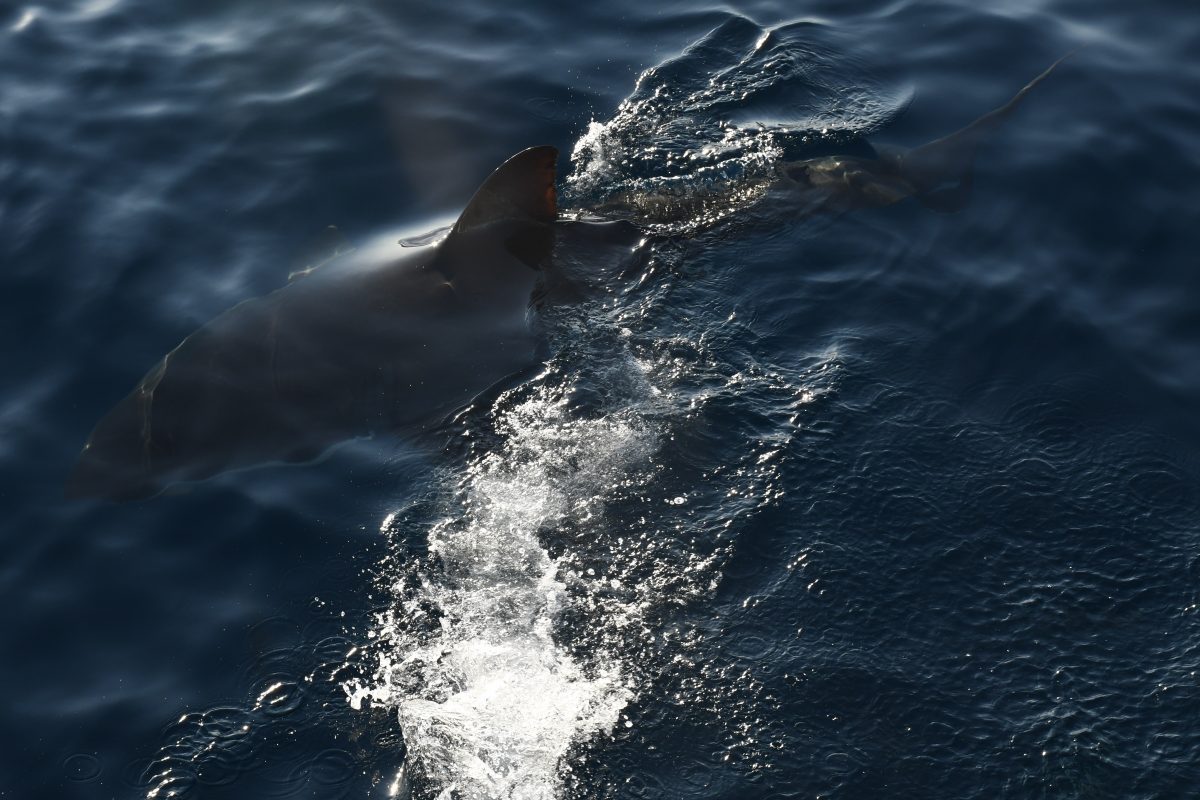
The iconic dorsal of the Great White (PC: Rodney Fox)
Diving with them was legendary, and I am so grateful to Rodney Fox Expeditions, Rolex, and OWUSS, and all my other amazing sponsors for allowing me to meet these animals on their playing field.
